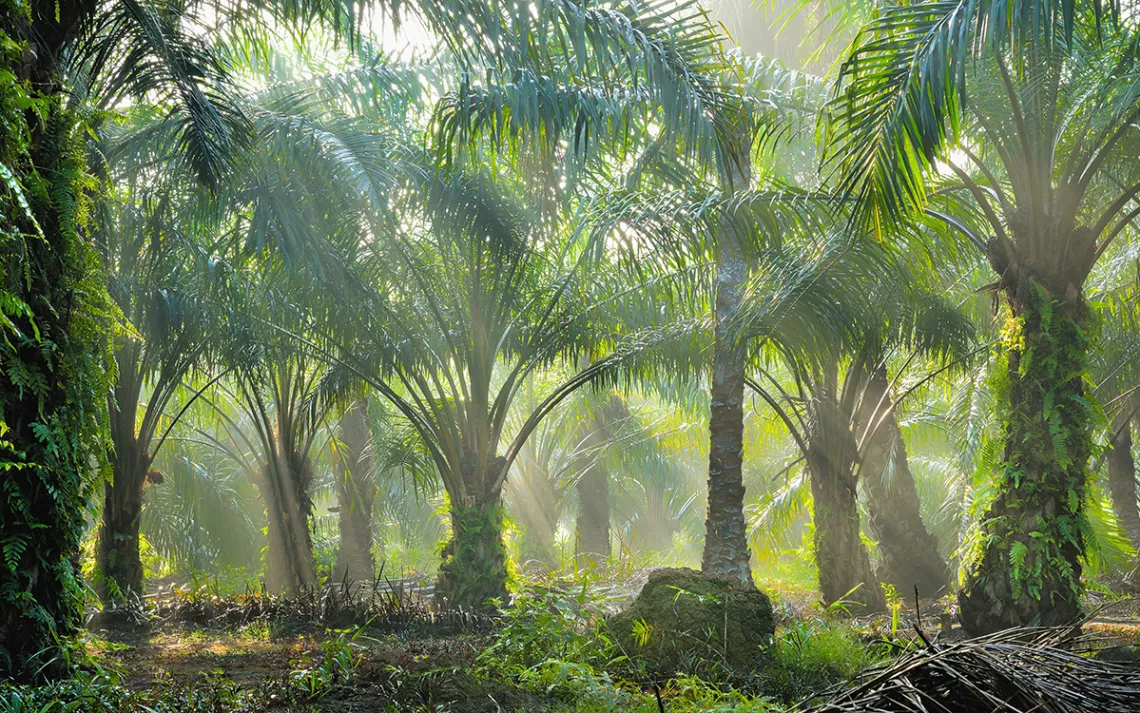Don’t Get Tricked Into Passing Out Industrial Palm Oil This Halloween!
Here's a bevy of animal-friendly classic treats
What was one of the scariest stories of 2019? The massive wildfires that were visible from space as they raged across the vast Amazon rainforest, spreading from Brazil into Bolivia, Paraguay, and Peru. The crisis followed the election of Brazilian president Jair Bolsonaro, a right-wing ideologue who swiftly weakened environmental protections and encouraged deforestation of the Amazon.
Beyond being the world’s largest carbon sink, the region is home to one in 10 species on Earth. When tropical rainforests burn down, or are destroyed to farm cattle or develop industrial plantations for soy or palm oil—which is added to chocolate and baked goods, turned into fry oil, and added to all manner of snacks, cosmetics, and soaps—these tropical creatures are pushed from their habitats and driven closer to the brink of extinction. The equivalent of 300 football fields of rainforest is destroyed every hour to make way for palm oil plantations, according to the World Wide Fund for Nature—and in the African and Southeast Asian rainforests, this has decimated the populations of vulnerable creatures including tigers, elephants, and rhinos. Orangutans and other primates are particularly besieged, as studies suggest that most areas suitable for growing palm oil overlap with their habitats. Industrial palm oil production impacts humans, too—Indigenous people have been forced from their lands, and plantation workers sickened by pesticides and contaminated water.
According to the Rainforest Action Network (RAN), palm oil appears in roughly half of packaged grocery store foods. (US Food manufacturers increased their use of the world’s cheapest vegetable oil after the FDA started enforcing limits on trans fats in 2005.) The good news is that consumer purchasing power can play a major role in rainforest health.
One step you can take to curb deforestation is to get wise to the details on product packaging. Fewer ingredients mean you’ll have less of a chance of a palm oil encounter, which has dozens of ingredient list aliases—vegetable oil, palmate, cocoa butter equivalent, glyceryl stearate, sodium lauryl sulfate, and glyceryl stearate, to name a few. Of course, you can always demand that your favorite food companies clean up their acts by either finding ethical, responsible alternatives to the stuff, or sourcing their palm oil responsibly. (Check out RAN’s handy scorecard, which keeps track of product manufacturers that have pledged to limit deforestation—and contributions to the climate and humanitarian crises—by switching to more sustainable forms of palm and other oils.) Keep in mind, palm oil-free does not necessarily equate to sustainable—keep an eye out for signs of unsustainable soy or coconut oil, too, which are often added to palm oil-free products, but are farmed in the same regions and result in habitat loss.
Thanks to consumer action and grassroots activism, the candy industry has made some strides in recent years, with major corporations including Nestle and Hershey removing unsustainably sourced palm oil from many beloved Halloween staples. How can you help keep Big Candy accountable? Here’s a handy list of classic candies that are nostalgic and easy to pass out but that do not contain palm oil, compiled with help from Products Without Palm Oil (which provides fantastic free resources for consumers). Remember to stay vigilant for labels’ hocus pocus, as ingredients can vary within a single brand’s offerings (looking at you, M&M’s and Reese’s), and don’t be tricked by those discount bags of mixed candy: Stick to one type (or make your own mix), and it’s easier to shirk the dreaded industrial palm oil.
Safe* Trick-or-Treat Classics
Atomic Fireballs
Boston Baked Beans
Black Forest Organic Fruit Flavored Snacks
Brach’s Candy Corn (including all Candy Corn varieties, and Mellowcreme Pumpkins)
Dots
Dove Milk and Dark Chocolate Promises
Dum Dums
Endangered Species chocolate bars
Ghirardelli chocolates
Goobers
Good ‘n Plenty
Haribo gummy candy
Hershey’s Kisses, Bars, and Nuggets (Milk Chocolate, Skor, and Special Dark are safe, but keep on eye on slick Mr. Goodbar; versions with and without palm oil are both in stores. And don’t buy bags of mixed nuggets—the assortment contains a flavor with palm oil.)
Jolly Ranchers
Justin’s Peanut Butter Cups
Kirkland Signature Organic Fruity Snacks
Lindt truffles and chocolate bars
M&M’s (Plain, Dark, Almond, and Pretzel varieties are safe for the moment, but last year, Mars changed the Peanut M&Ms recipe, which now includes palm oil, as does Dark Chocolate Peanut.)
Nerds
Nelly’s Organics (all chocolate bars)
Nuubia Chocolate
Raisinets
Red Hots
Reese’s Peanut Butter Cups (Read labels to be sure, but bagged, individually wrapped snack size, and standard-sized cups and generally palm oil-free.)
Ring Pops
Tony’s Chocolonely (all chocolate bars)
Saf-T-Pops
Sno Caps
Wholesome Organic Lollipops
Yum Earth Candy (including Organic Pops, Organic Candy Corn, Organic Hard Candy, Gummy Bears, Gummy Worms, Organic Sour Beans, and Gummy Fruits)
York Peppermint Patties
*For the purposes of this story we mean "safe" in the context of unsustainably sourced palm oil. Many of the candy options on this list are high in sugar and use plastic packaging. For a healthier, less cavity-inducing Halloween, seek out dye-free, low-sugar options that are free of corn syrup.
 The Magazine of The Sierra Club
The Magazine of The Sierra Club




